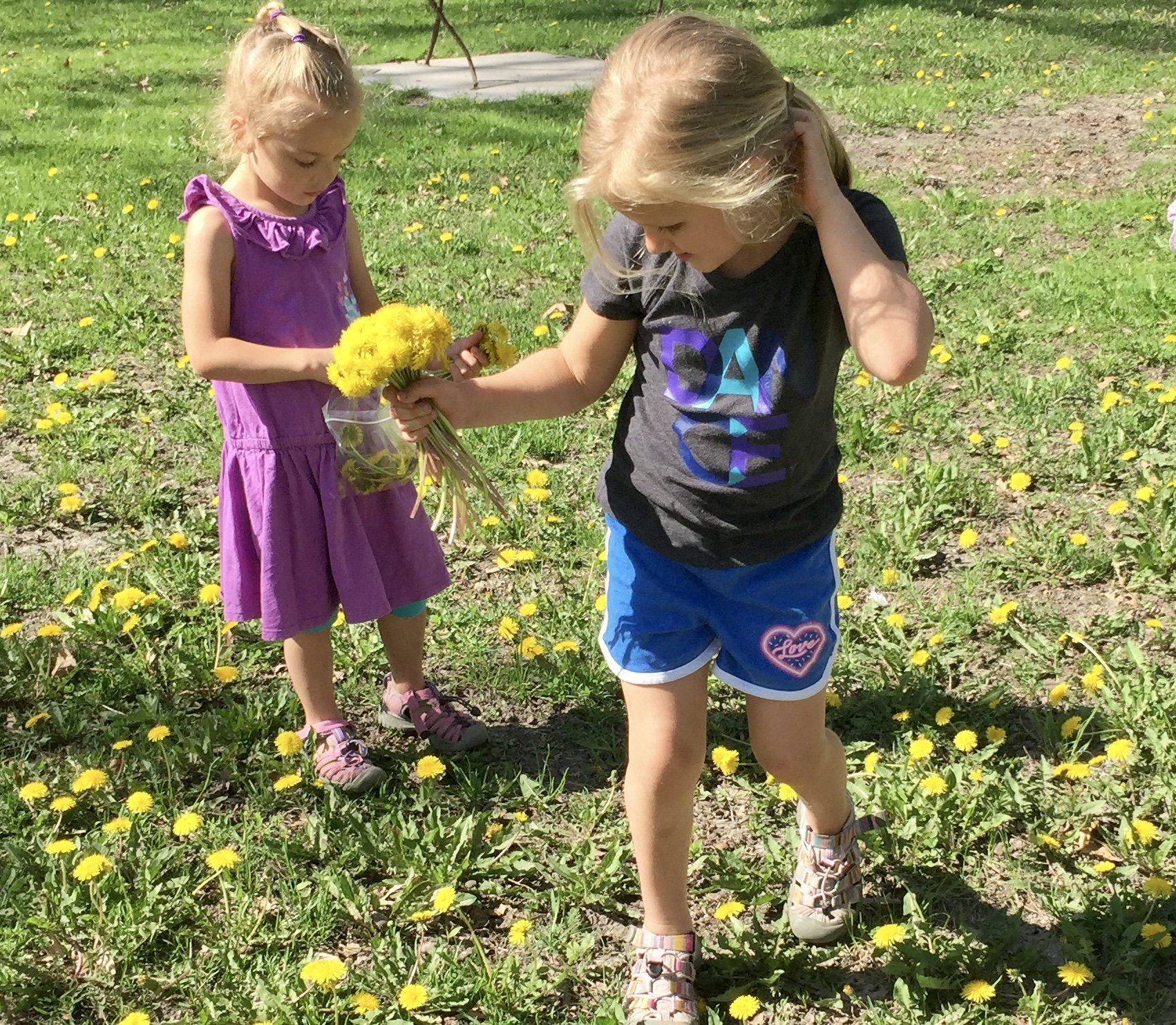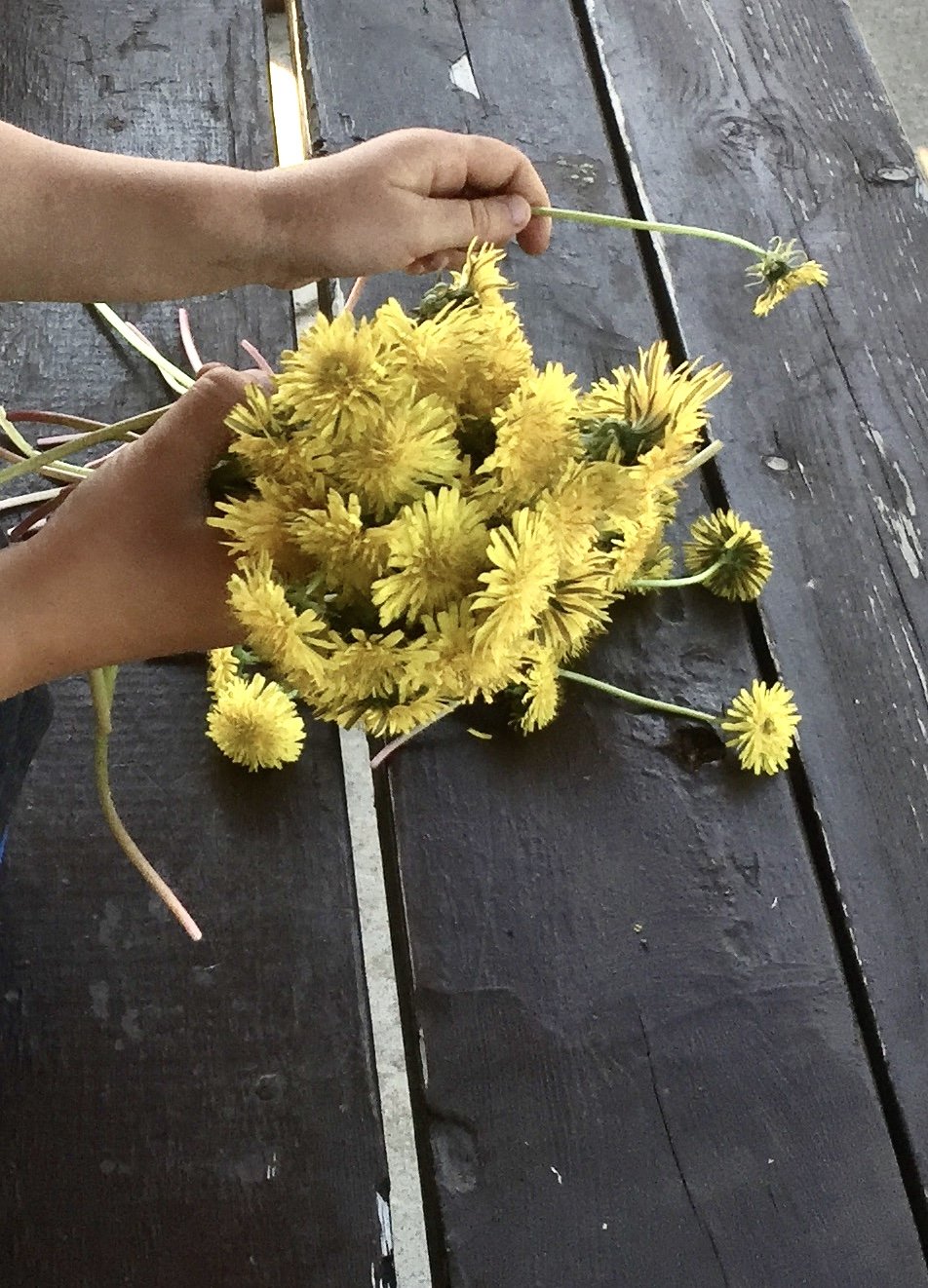Dandelion Math
Each spring, we eagerly anticipate the arrival of the growing season—from the greening carpet of grass to the buds bursting into blossom on the trees. We especially delight in the dandelions that can turn any grassy area into a STEM wonderland!
Dandelions introduce so many math adventures into our early childhood program. The neighborhood park is our favorite destination for a day of dandelion STEM adventures.
Our spring dandelion days create hours and hours of exploration, investigation, observation and just plain fun! Mother Nature is serving up math opportunities everywhere we turn!
When we find ourselves in these nature-based outdoor classrooms, the learning is always developmentally appropriate and child-centered.
On the day that this photo (above) was taken, the flowers were too tall to spend much time on patterns or subitizing or blowing seed heads in the wind. We kept finding longer and longer stems, some with flowers and some with wispy white seed heads.
The giggles were contagious as the children continued to find taller and taller dandelions. It was a day that was unplanned, so the measuring tapes were back at school, but it didn't matter! This was a great moment for estimating, predicting and comparing attributes side by side.
"My grammy says the tallest dandelion you can find equals how many inches you will grow before your birthday!" said one STEM explorer.
Oh boy... GAME ON! Giggles and screams of discovery floated down the hillside as our dandelion math morning took on a life of its own.
"If you grow that much, you will be a GIANT!" predicted one preschooler as Violet studied a dandelion stem that must have been at least two feet long.
"Violet! You keep finding longer and longer stems!" exclaimed another. "Wow, look at the one behind you! Add that to your collection! Are the tallest ones up there?"
When you are yards away from your friends AND on a hill, it's hard to determine who has found the tallest dandelion until you walk over to compare sizes and see which dandelion has the longest stem.
Measurement is one of the earliest mathematical concepts that children learn.
Comparing the sizes of objects, determining which stem is the longest, comparing which child is the tallest and identifying that a friend is high up on the hill are all examples of the ways that young learners begin to understand the concept of measurement.
By building on this rudimentary understanding, we can help lay the foundation of logic, reasoning, comprehension and critical-thinking skills that will lead to later math success.
"Did they all grow from the same seed family?" mused one dandelion hunter.
"Maybe we blew on a tall dandelion the last time we were here and the seeds got planted in the ground and grew this tall,” postulated another.
Whoa, now those are some interesting ideas! But, before we could discuss their theories, the children had moved on to yet another area of investigation.
"Hey guys! You need to pick the flower at the very, very bottom of the stem to keep your stem super long," instructed one of the older children.
This concept was way beyond the comprehension of some of our younger friends, despite the efforts of the other children to teach them.
Ah, the beauty of multi-age groups. The beauty of allowing learning to take place as the brain and physical development allows. The beauty of friendships and childhood on a sunny spring day, when all of the stars (or, in this case, dandelions!) align and the learning comes so naturally.
I knew that we were using our math vocabulary when I heard the words, "height, tall, taller, tallest, short, shorter, shortest, long, longer, longest, more and less." These simple but important words proved that the children were reaping the benefits of this springtime STEM lesson without the support of lesson plans or a word wall.
Exposure to experiences such as our Spring Dandelion Day STEM Adventure enables early learners to begin to interpret the mathematical qualities in real-world settings.
By observing, measuring, comparing and analyzing objects in their environment, they are also learning more about the world that they live in.
Our springtime "field study" offered an invaluable opportunity for young learners to practice early math skills while guiding their own mastery of important math concepts.
The experience was an empowering one for every one of our STEM explorers, inspiring the children to build on their nascent knowledge by seeking out new ideas and experiences.
Carve out time and opportunities for your early learners to acquire, practice, rehearse and build upon the skills that will carry them through their academic life. Your math curriculum and early learning standards are outside—just waiting for you!



